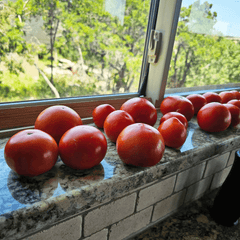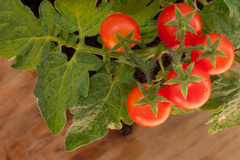Tomatoes are a beloved garden staple, known for their juicy flavor and versatility in the kitchen. However, achieving a bountiful harvest requires proper watering techniques to ensure the health and vitality of the plants.
1. Consistency is Key:
Tomatoes thrive when they receive consistent moisture. Aim to water your tomato plants deeply and regularly, ensuring the soil stays consistently moist but not waterlogged. Inconsistent watering can lead to issues like blossom end rot or split fruit. Typically, tomatoes will require watering 1-2 inches per week, depending on the weather conditions and the stage of growth. During hot spells or dry periods, you may need to increase the frequency to prevent stress on the plants.

2. Morning is Ideal:
To ensure optimal absorption and minimize the risk of disease, it's best to water tomatoes in the morning. Early morning watering allows the foliage to dry out during the day, reducing the chance of fungal infections, such as blight. Additionally, watering in the morning gives the plants the necessary moisture to handle daytime heat stress, promoting healthy growth and productivity.
3. Direct the Water at the Root Zone:
When watering tomatoes, it's crucial to focus on the root zone rather than watering the leaves or stems. Direct the water at the base of the plants, as this is where the roots are most active in absorbing moisture and nutrients. By avoiding foliage wetness, you can prevent the development of diseases and create a more efficient watering system that reaches the plants' most critical part.

4. Don't Overwater:
While tomatoes require consistent moisture, overwatering can be just as detrimental as underwatering. Overwatered plants can suffer from root rot, reduced oxygen availability, and decreased nutrient absorption. To prevent overwatering, ensure that the soil is well-drained and not overly saturated. Test the moisture content by inserting your finger or a moisture meter into the soil. Water only when the top inch feels dry to the touch, providing a balance between watering needs and avoiding excessive moisture.
 5. Mulch Matters:
5. Mulch Matters:
Applying a layer of organic mulch around your tomato plants has numerous benefits, including water conservation. Mulching helps retain moisture in the soil, reduces weed growth, and regulates soil temperature. By adding a 2-3 inch layer of organic mulch, such as straw, wood chips, or compost, you can create a protective barrier that minimizes water evaporation and promotes healthier root systems. As a bonus, mulch can also enhance the visual appeal of your garden!
Watering tomatoes is an art that requires attentiveness and care to ensure a thriving harvest. By following these five essential tips: maintaining consistency, watering in the morning, targeting the root zone, avoiding overwatering, and utilizing organic mulch, you can provide your tomato plants with the ideal moisture conditions for robust growth and fruitful yields. So grab your watering can, create a watering routine, and watch your garden flourish with delicious, homegrown tomatoes. Happy gardening!
